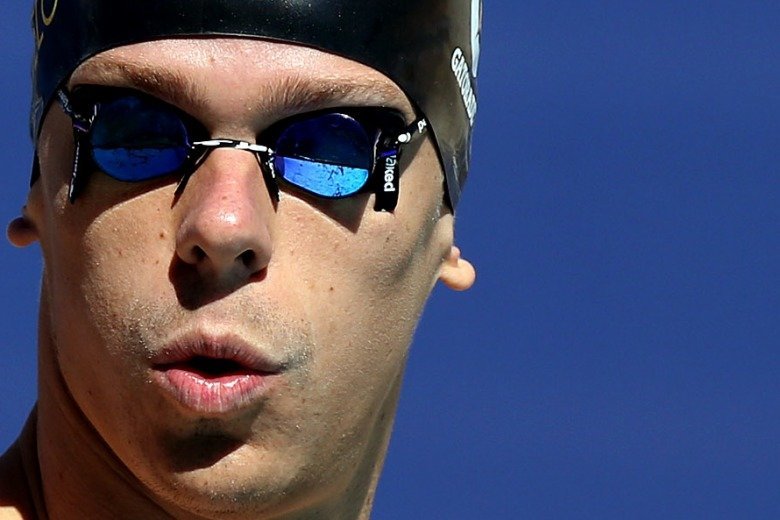Courtesy of Deniz Hekmati, BS, NSCA-Certified Strength & Conditioning Specialist, Founder of Swimmer Strength.
Throughout my competitive swimming experience, I wondered why my various coaches had such differing approaches to training. From all the different methods, how could I choose what was best for me? Which approaches should I use when training other competitive swimmers? While getting my degree in Exercise Science and swimming for Arizona State University, I kept relating what I was learning in the classroom into what we were doing in the pool and weight room.I kept asking, “What are the underlying physiologic principles that translate into an effective training program?” What I learned was that swimming was an infinitely more complex and beautiful sport than I imagined.
We know that swimming is the only Olympic sport that has such great range of versatility when it comes to the difference in strokes and distances; therefore, each event has its own unique requirements: body position, muscular activity, joint movements, and physiologic demands. The stroke movements associated in water resistances are difficult to duplicate out of the water; consequently, these factors make designing astrength training program a difficult task, that has led to controversies on which, if any, strength training programs are best for which swimmers. I created the website “SWIMMER STRENGTH” to provide a place where the world of swimming can gain useful valid information about strength training to optimize their performances.
Before designing a training program for a swimmer in any event, it is important to understand the physiological determinants for the event and the physiological capabilities of the individual swimmer: “What are the muscular requirements for the stroke(s)? How long is the race? What are the physiological needs in terms of energy delivery? What is the athlete’s baseline physiologic profile?”
It easy to see how these disparate physiologic requirements lead to a variety of view points on how to train. Some training regimens emphases time in the pool, and little if any resistance training. Other programs advocate weight-lifting at 40-60% of maximal effort and focus more on endurance resistance training with many repetitions and less rest between sets. Many of these programs completely ignore recent scientific research into exercise physiology.
In 2011, Cesar Cielo won the World Championship in the 50M free and 50M butterfly. However, in October of 2012, Cesar underwent extensive surgery on both knees. The recovery was long and arduous which robbed Cesar of a great deal of quality training. Flip turns were painfully and starts were slow, opting out of the 100M events. In late April 2013, Cesar managed a 21.57 in the 50M free and 23.16 in the 50M fly, at the Brazilian trials. His average reaction time was then only 0.71s. With the 2013 World Championship just a few months away, Cesar had to find a way to quickly regain his leg strength while continuing to rehabilitate his knees. In particular, he needed to drop his reaction time toward the 0.61s of his 2009 freestyle WR.
When I took over his strength-training program for Worlds, we used a carefully planned approach, where we first rebuilt his leg strength without adversely affecting the recovery process for his knees. Once we had the baseline strength, we began working on his power and reaction time. The test of the program came on July 29th, in Barcelona. On that day, Cesar won the World Championship 50M fly, posting a remarkable 22.86 (best prior was 22.76). Four days later, Cesar became the first person to win the 50M freestyle World Championship 3 consecutive times, with a 21.32. His reaction time was an amazing 0.63s. Cesar’s dramatic improvements came from a highly individualized and structured program that took just three months.
Strength training for swimmers is so much more than getting stronger and building muscles, as there are much bigger and more important components to consider.
Swimmer Strength is designed to help the swimming community gain access to evolving information regarding resistance training for any swimmer in any age group. On the website I discuss a wide range of topics in a blog and video format that will benefit swimming performances. “SWIMMER STRENGTH” closes gaps, addresses questions that need answering, and brings the swimming community together to optimize performances around the world.

 SWIMMER STRENGTH
SWIMMER STRENGTH
que lentes usa el en la foto
“We know that swimming is the only Olympic sport that has such great range of versatility when it comes to the difference in strokes and distances,” he says, forgetting that track & field exists.
The article should mention his underwater kicks after start gave a lot of trouble for him.In WorldsChamps, his first 15 meters was 5.28, around 0.2 far from his best.It was told he is a lot better in his first 13-25 meters now.